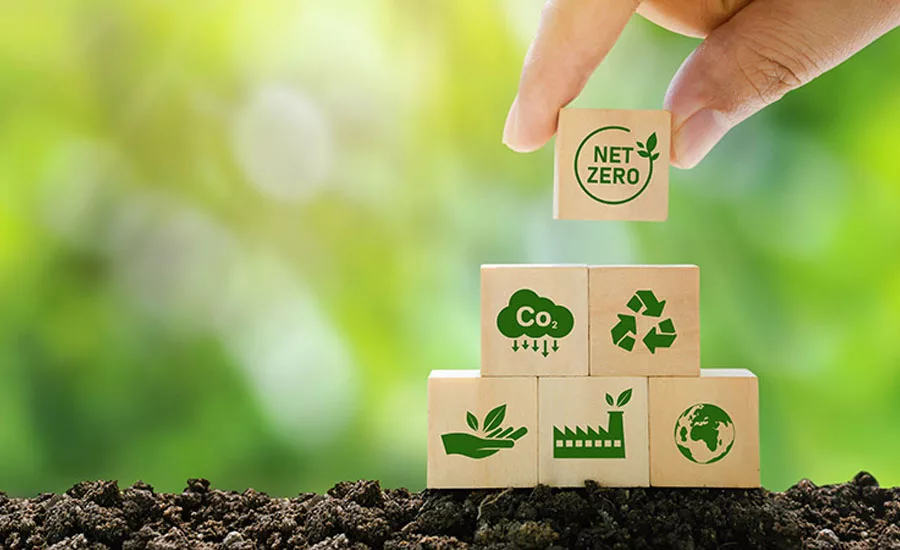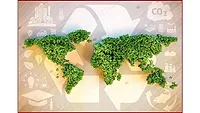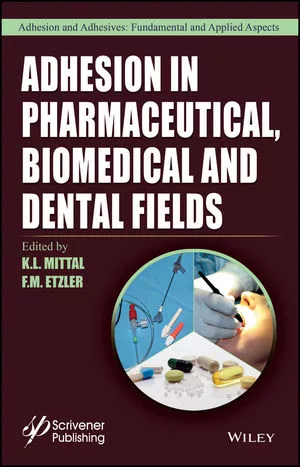Upcycling Glassine Liners
Fedrigoni Group has developed a processes whereby it collects siliconized glassine liner waste material and reuses it to create decorative labels.

Sakorn Sukkasemsakorn / iStock / Getty Images Plus via Getty Images
Consumers are increasingly concerned with the impact their buying decisions have on the environment, and among topics of top concern is the amount of waste produced. According to the Global Waste Management Outlook, published by the United Nations Environment Programme and the International Solid Waste Association, between 9 to 12 billion tons of waste is generated around the world every year, with a significant portion of that waste coming from commercial and industrial sources. The increase in solid waste is due in part to the rise of urban populations and changes in consumption patterns, which include the prevalence of single-use products, an increase in population, waste within manufacturing processes, and insufficient and poorly designed waste management policies.
Among the solutions presented to address the solid-waste problem is the concept of a circular economy, which takes waste generated by consumer products and the manufacturing process and recycles and repurposes it, thus returning it to the production chain. One company that has integrated circular economy concepts into its current product offering is Fedrigoni Group, producer of labels and self-adhesive materials and papers for luxury packaging. The move lines up with Fedrigoni’s ESG goals, helping the company reduce its waste and CO2 emissions.
In October 2022, Fedrigoni Group launched Re-Play™, a product range of upcycled self-adhesive materials. The premium labels are made from the upcycling of siliconized glassine liner materials, a material that was previously partly recycled and partly discarded. The liner is recovered from end-users and then reused as the material for the facestock of decorative labels. The Re-Play range consists of four types of 100% recycled paper: Nature White, Martelé, Retrò, and Pearl. All these products will carry the FSC recycled certification, which attests to their composition and value as a recycled and sustainable product.
ASI spoke with Fernando Giron, Fedrigoni Self-Adhesive Sale director, to learn more about how the company has taken waste and turned it into products for luxury brands such as wine labels.
ASI: To begin with, how did Fedrigoni come up with the idea of upcycling glassine liners?
Giron: We had to react to a tread and collect glassine from one important winery, so we had this material on-hand to manage, and we had the need to find the way to reuse it. After investigating internally into Fedrigoni Group and running some trials, we realized we could recycle it into new paper. We then broadened the audience; we made a screening of possible partners, and finally we selected Clairefontaine, which had the most advanced know-how in recycling waste paper into high-quality paper that was then translated into a new product for wine.
ASI: Can you give me a brief description of the new product and the process Fedrigoni uses to create it?
Giron: The product is 100% composed of waste paper, so there is no virgin or de-inked pulp in it, so it is really a full recovery of waste with up to 15% white glassine content transformed in a completely new paper for the wine market.
ASI: What advantages do upcycled glassine liner materials offer customers?
Giron: They can finally be really part of a closed-loop circular recycling system, contributing directly to the success of it helping with glassine selection; and see their waste back to their facilities with a new life in a much nicer product with all related benefits related to reduced impact of the new products in terms of carbon emission, water consumption, and energy, reducing the overall impact more than 50% compared to a regular paper with the same characteristics.
ASI: I understand that you have a partnership with Les Papeteries de Clairefontaine for the recycling part of the process, can you explain how that works?
Giron: One of the biggest limitations for collected glassine at our end-users is finding someone that can handle small rolls in the format they are in. Many paper mills can accept glassine in bales but to make it there is an additional step to add, and it is adding cost and complexity to the exercise. Clairefontaine was very flexible with us, and they had no issues handling the small rolls.
ASI: How does this new approach to recycling and upcycling of glassine align with Fedrigoni’s ESG goals?
Giron: This product perfectly fits to our ESG targets, being a product with recycled content but going even further being a circular product.
ASI: This new product range is a great example of a company taking waste and turning it into something valuable. What advice would you give other companies as they work to align their business with a circular economy?
Giron: The big volumes of glassine are at end-user level, they have a unique opportunity in hands, especially wineries, to be really actively part of a circular economy with direct impact from their side and to take all the advantages of it.
Thank you to Fernando Giron for taking the time to talk to ASI. For more information about Fedrigoni Group, visit fedrigoni.com/en.
Looking for a reprint of this article?
From high-res PDFs to custom plaques, order your copy today!







